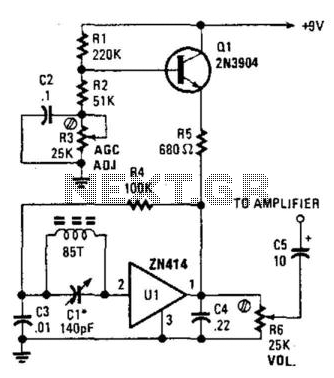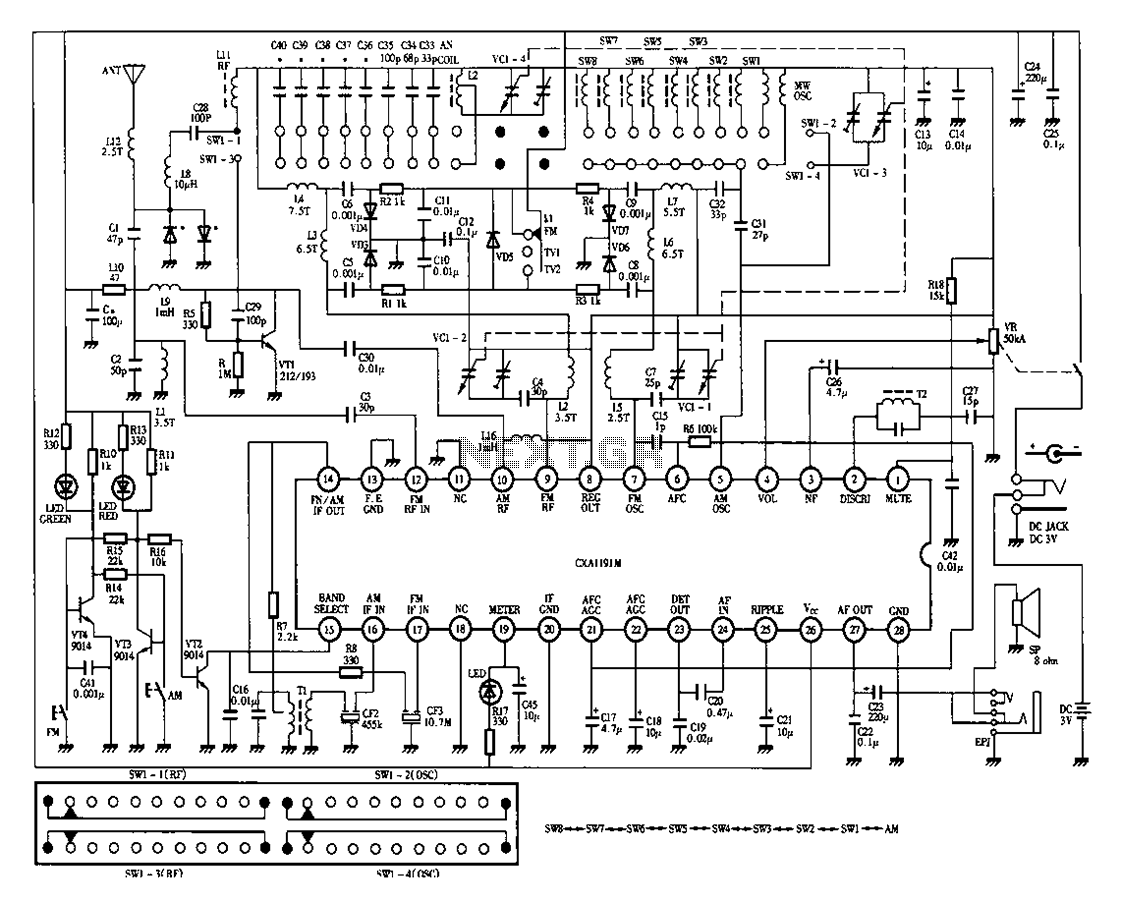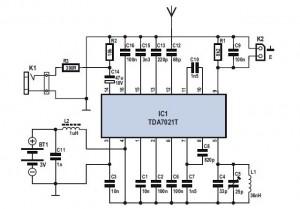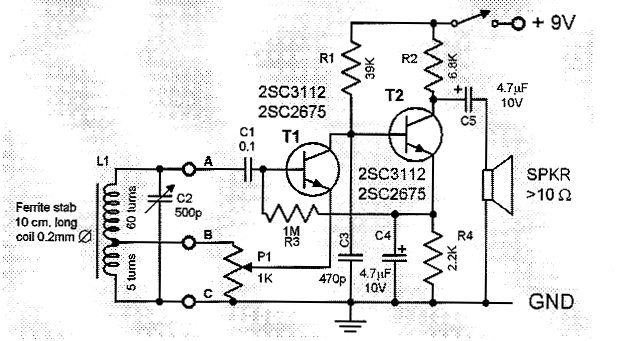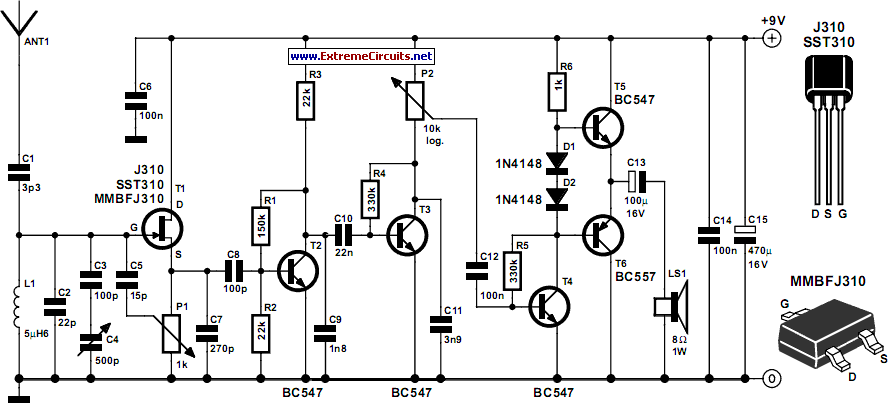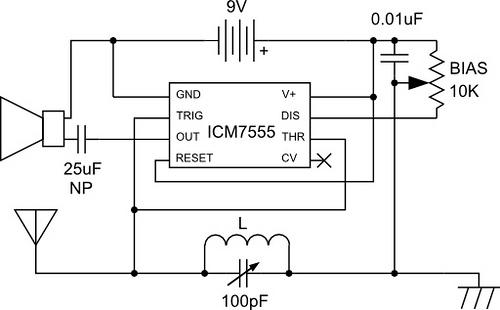
CMX7031Q1 The Two-Way Radio Processor
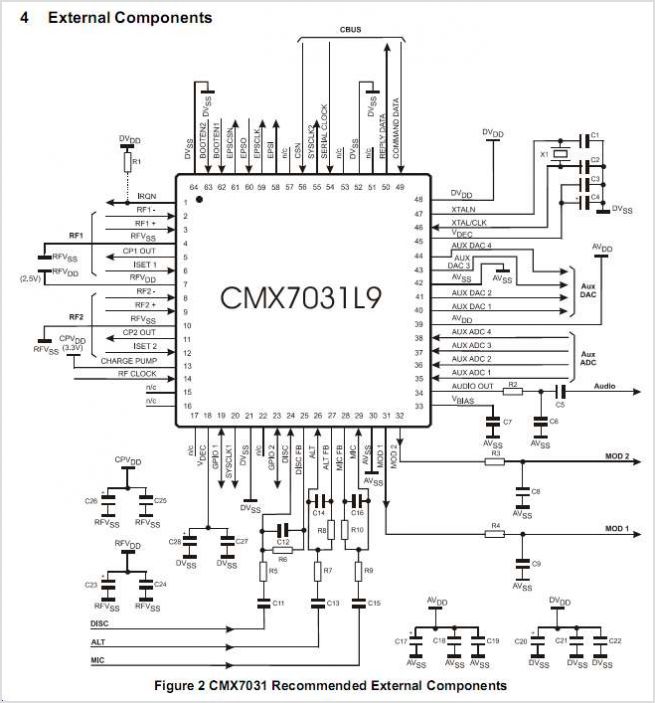
The CMX866 is a multi-standard modem designed for use in telephone-based information and telemetry systems. Control of the device is achieved through AT commands via a simple 9600 b/s serial interface, which is compatible with various types of host controllers. An RS232-compatible interface can be established by adding a level converter. Data transmission and reception occur over the same serial interface. The on-chip controller interprets these AT commands and manages an internal DSP that provides modem and ancillary functions, including ring detection, call progress detection, hook switch control, and DTMF autodialing. User-specific DSP functions are also accessible through the AT command set. Hardware support is available for V.23 and Bell 202 Fast Turnaround, facilitating rapid return to AT command mode. A Fast Connect mode has been implemented to minimize modem connection time. Integrated flexible line driver and receive hybrid circuits require only passive external components to construct a 2 or 4-wire line interface. Complete examples of 2-wire line interfaces to an external host controller and to an RS232 interface, including additional components required for Type 1 CLI, are provided. By Consumer Microcircuits Limited.
The CMX866 modem is an advanced solution for integrating telecommunications capabilities into various applications, particularly in telemetry and information systems. Its design allows for seamless communication through a 9600 b/s serial interface, which is widely compatible with numerous host controllers, enhancing its versatility in different environments. The addition of a level converter enables the creation of an RS232-compatible interface, expanding its connectivity options.
The internal architecture of the CMX866 includes a dedicated digital signal processor (DSP) that plays a crucial role in interpreting AT commands sent from the host controller. This DSP not only manages the core modem functions but also supports additional features such as ring detection, which alerts the system to incoming calls, and call progress detection, providing feedback on the status of the call setup. The hook switch control feature allows the modem to manage the telephone line state, while DTMF autodialing enables automated dialing based on dual-tone multi-frequency signaling.
The modem's AT command set is designed to be user-friendly, allowing developers to customize DSP functions to meet specific application requirements. Hardware support for communication standards such as V.23 and Bell 202 Fast Turnaround ensures that the CMX866 can quickly return to AT command mode, optimizing responsiveness in real-time applications. The Fast Connect mode further reduces the time taken to establish a connection, which is critical in time-sensitive scenarios.
The integration of flexible line driver and receive hybrid circuits within the chip simplifies the design process for developers, as only passive components are needed to complete the 2 or 4-wire line interface. This design choice not only reduces the overall component count but also enhances reliability and ease of implementation. Detailed examples of 2-wire line interfaces, including connections to external host controllers and RS232 interfaces, are provided, showcasing the necessary components for integrating Type 1 CLI functionality. This comprehensive support makes the CMX866 an ideal choice for developers seeking to implement robust telephone-based communication solutions.The CMX866 is a multi-standard modem for use in telephone based information and telemetry systems. Control of the device is via AT commands over a simple 9600b/s serial Interface compatible with most types of host Controller. An RS232 compatible Interface CAN be created by the addition of a Level Converter. The data transmitted and received by the modem is also transferred over the same serial Interface The on-chip Controller interprets these AT commands and controls an internal DSP which provides the modem and anciliary functions such as Ring Detection, Call Progress Detection, Hook Switch control and DTMF autodialling. User-specific DSP functions are also available via the AT command set. Hardware support is provided for V. 23 and Bell 202 Fast Turnaround and for rapid return to AT Command mode. A Fast Connect mode has been implemented to reduce modem connection time. Flexible line driver and receive hybrid circuits are integrated on chip, requiring only passive external components to build a 2 or 4-wire line Interface Complete examples of 2-wire line Interfaces to an external host C and to an RS232 Interface including the additional components required for Type 1 CLI, are provided.
By Consumer Microcircuits Limited 🔗 External reference
The CMX866 modem is an advanced solution for integrating telecommunications capabilities into various applications, particularly in telemetry and information systems. Its design allows for seamless communication through a 9600 b/s serial interface, which is widely compatible with numerous host controllers, enhancing its versatility in different environments. The addition of a level converter enables the creation of an RS232-compatible interface, expanding its connectivity options.
The internal architecture of the CMX866 includes a dedicated digital signal processor (DSP) that plays a crucial role in interpreting AT commands sent from the host controller. This DSP not only manages the core modem functions but also supports additional features such as ring detection, which alerts the system to incoming calls, and call progress detection, providing feedback on the status of the call setup. The hook switch control feature allows the modem to manage the telephone line state, while DTMF autodialing enables automated dialing based on dual-tone multi-frequency signaling.
The modem's AT command set is designed to be user-friendly, allowing developers to customize DSP functions to meet specific application requirements. Hardware support for communication standards such as V.23 and Bell 202 Fast Turnaround ensures that the CMX866 can quickly return to AT command mode, optimizing responsiveness in real-time applications. The Fast Connect mode further reduces the time taken to establish a connection, which is critical in time-sensitive scenarios.
The integration of flexible line driver and receive hybrid circuits within the chip simplifies the design process for developers, as only passive components are needed to complete the 2 or 4-wire line interface. This design choice not only reduces the overall component count but also enhances reliability and ease of implementation. Detailed examples of 2-wire line interfaces, including connections to external host controllers and RS232 interfaces, are provided, showcasing the necessary components for integrating Type 1 CLI functionality. This comprehensive support makes the CMX866 an ideal choice for developers seeking to implement robust telephone-based communication solutions.The CMX866 is a multi-standard modem for use in telephone based information and telemetry systems. Control of the device is via AT commands over a simple 9600b/s serial Interface compatible with most types of host Controller. An RS232 compatible Interface CAN be created by the addition of a Level Converter. The data transmitted and received by the modem is also transferred over the same serial Interface The on-chip Controller interprets these AT commands and controls an internal DSP which provides the modem and anciliary functions such as Ring Detection, Call Progress Detection, Hook Switch control and DTMF autodialling. User-specific DSP functions are also available via the AT command set. Hardware support is provided for V. 23 and Bell 202 Fast Turnaround and for rapid return to AT Command mode. A Fast Connect mode has been implemented to reduce modem connection time. Flexible line driver and receive hybrid circuits are integrated on chip, requiring only passive external components to build a 2 or 4-wire line Interface Complete examples of 2-wire line Interfaces to an external host C and to an RS232 Interface including the additional components required for Type 1 CLI, are provided.
By Consumer Microcircuits Limited 🔗 External reference
